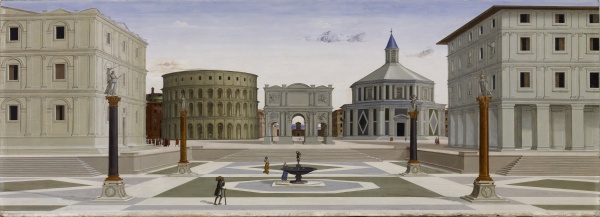Facts About The Ideal City
The "Ideal City" refers to three captivating Italian Renaissance paintings from the late 15th century. These works, housed in Urbino, Baltimore, and Berlin, continue to intrigue due to the ongoing mystery surrounding their creators. While various theories have been proposed, the true artists behind these masterpieces remain unidentified.
These paintings are notable not only for their artistic excellence but also for their distinctive elongated format. The intent behind their creation remains elusive, sparking continuous debate among art historians.
Let's examine each painting in detail:
1. Baltimore Painting: Displayed at the Walters Art Museum, this piece is frequently attributed to either Fra Carnevale or Francesco di Giorgio Martini. It depicts a cityscape brimming with architectural elements that symbolize virtues and principles of good governance. This painting has permeated popular culture, appearing in the film "Twelve Monkeys" and the video game "Assassin's Creed 2." Additionally, a reproduction was featured in the open-air exhibition "Off the Wall" in Baltimore.
2. Urbino Painting: Located at the Galleria Nazionale delle Marche, this work portrays a religious central-plan building set within a square. It has been associated with several artists, including Piero della Francesca and Luciano Laurana, though a definitive attribution remains elusive.
3. Berlin Painting: Known as the "Architectural Veduta" this painting resides in the Gemäldegalerie Berlin. While tentatively attributed to Francesco di Giorgio Martini, its title remains neutral due to the lack of definitive evidence regarding its creator.
All three paintings celebrate the values of a well-ordered society, employing mathematical perspective to craft stunning illusions of space and depth. These works stand as a testament to the ingenuity and vision of Renaissance artists, continuing to captivate and inspire viewers centuries after their creation.

 Mexico
Mexico